Yesterday we had another opportunity to spend some time with a ventilator and do some testing. The goal was to compare the ventilator readings to both my SFM3300 Fast Track Tidal Volume Meter and Thomas Hydronics' Automotive MAF Meter.

Using a test lung, we simply added the meter inline. In this setup, the meters saw bi-directional airflow.
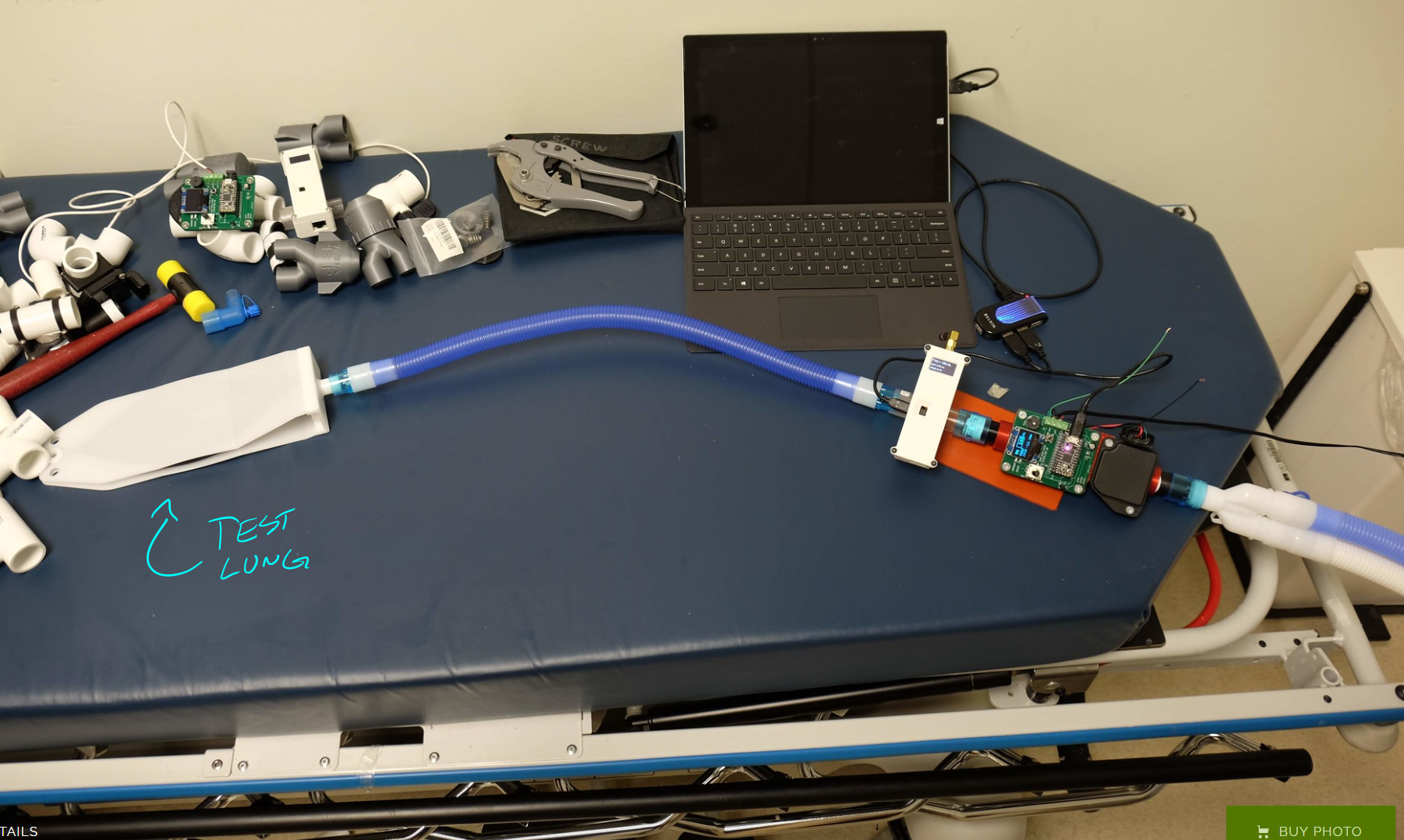
Data was recorded on paper, taped to wall, using sharpie.
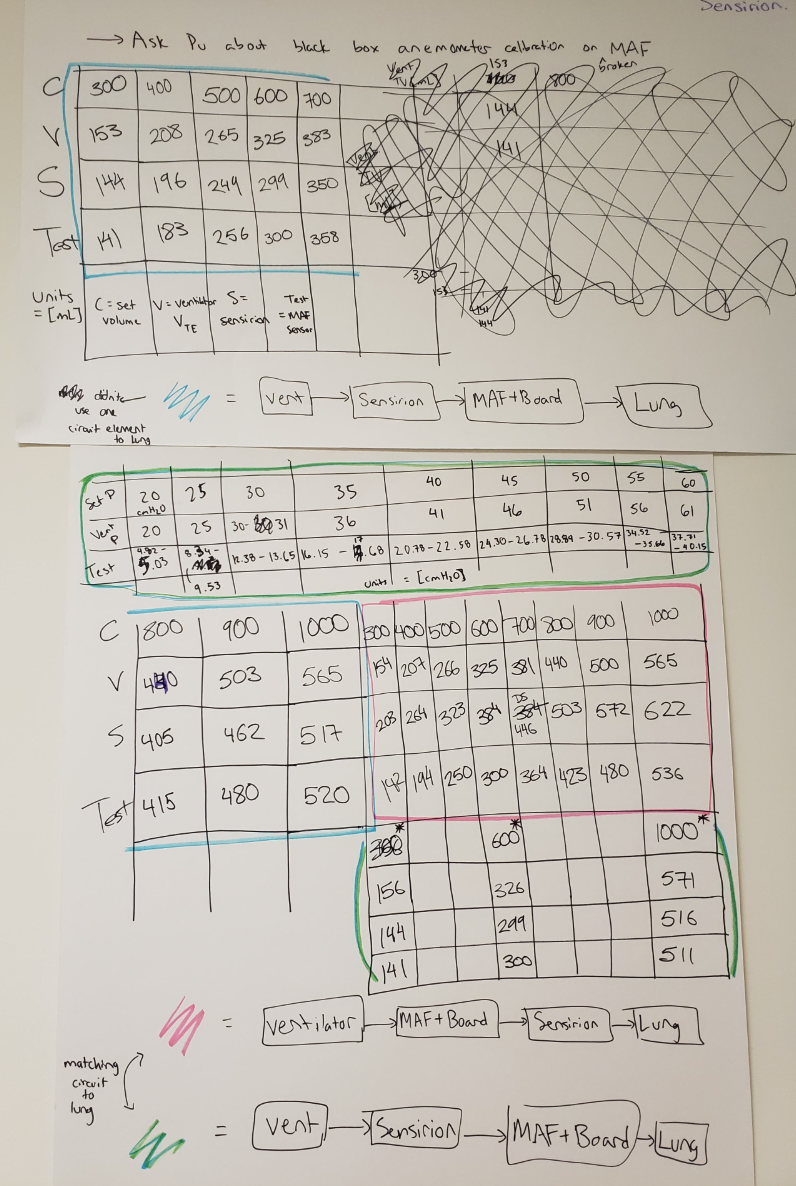
2 setups were run, we changed the order of the meters.
Setup 1: Vent -> FTTVM -> MAF Meter -> Lung
Both meters were seeing bidirectional flow and giving readings of expiratory flow (flow from lung back to vent)
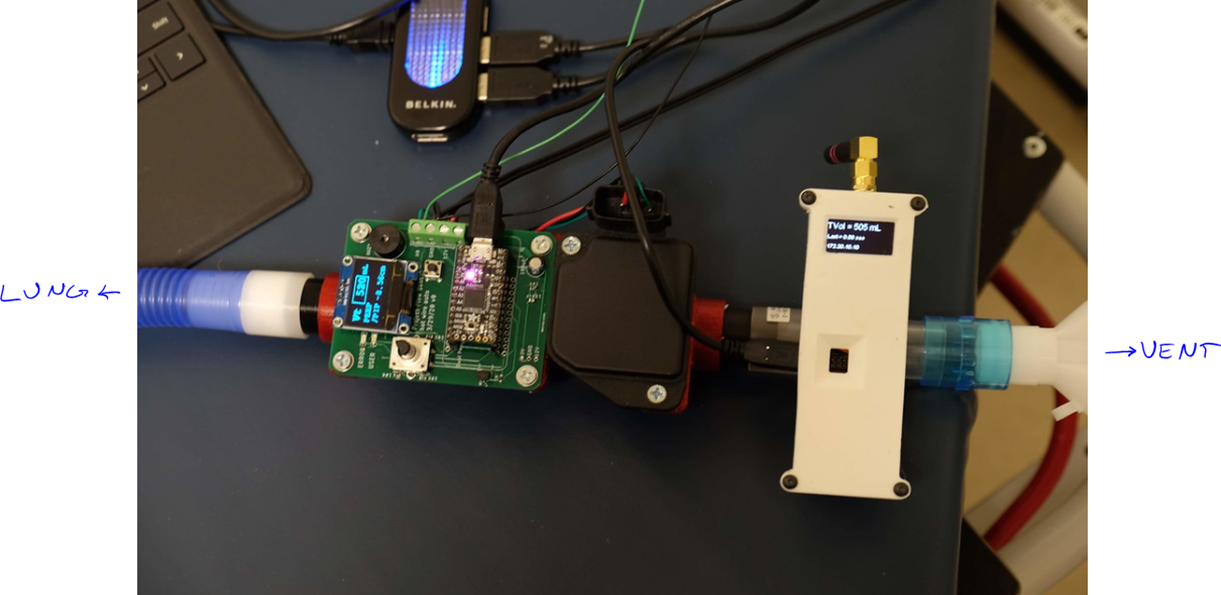

Here you see the set point on the X axis and Y is actual values. Observations:
- We ran the ventilator over a range of TVs (in increments of 100 ml) and recorded the actual measurements
- The set point for TV is controlled by other factors (lung compliance, pressure limits, time limits on breath duration, etc). So actual tidal volume is more of a goal, but not a requirement. You rely on the ventiator's measured volume.
- The SFM3300 Fast Track Tidal Volume Meter was measuring less, but also as the ml went up, it's error increased. Average error was -27.5ml.
- The MAF meter was measuring less also, but error was more constant. The average error was -23.6ml.
Setup 2 - change the order of the sensors
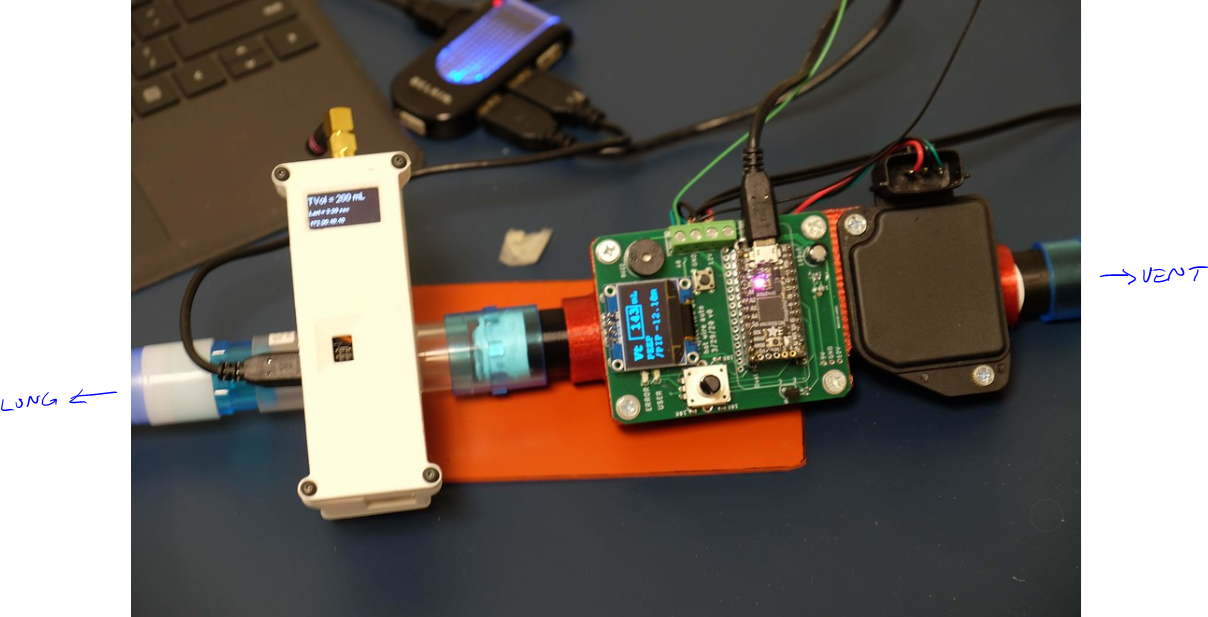
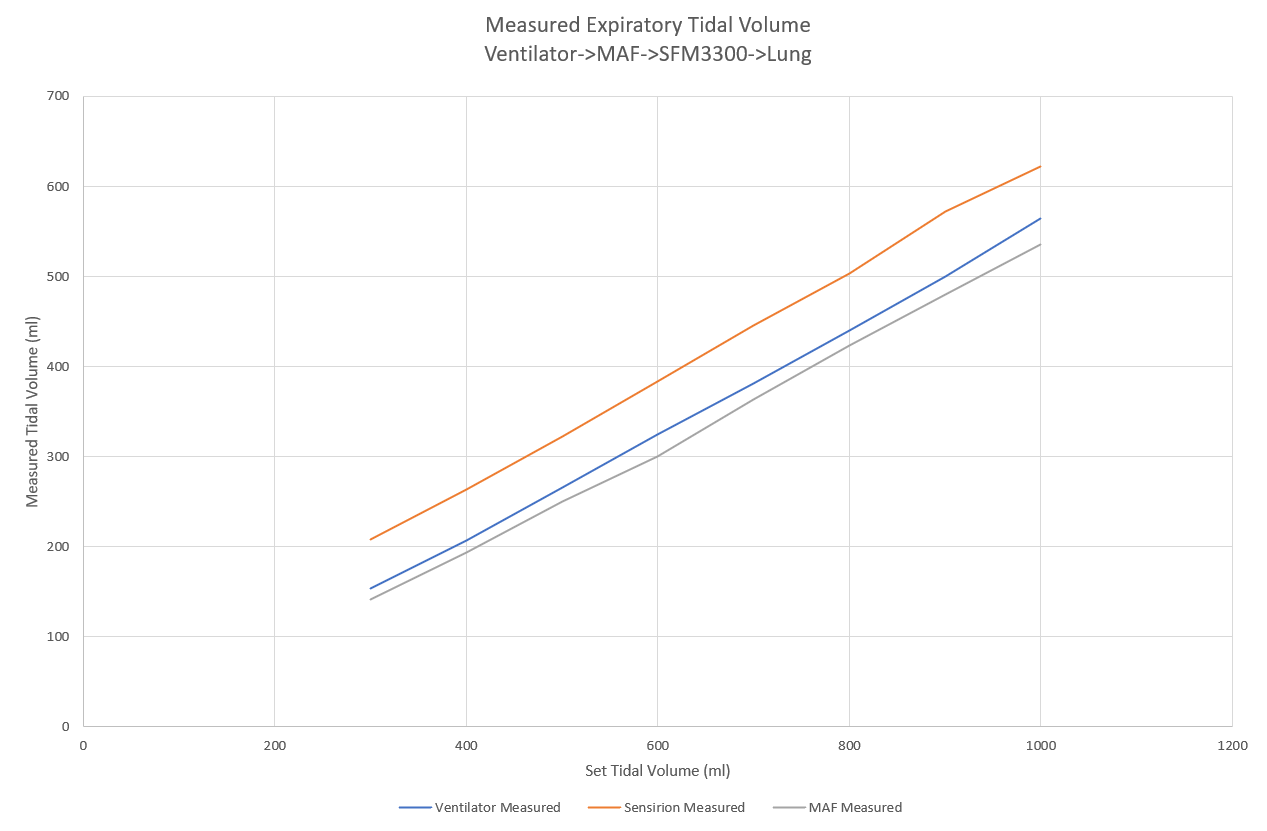
Here, the SFM3300 was giving higher readings. The MAF was less affected by this change.
- SFM3300 average error was +60.5ml
- MAF average error was -18.6ml
Conclusion:
- By calibrating the MAF, we're able to create acceptable readings.
- Need to understand why the order of sensors changed the SFM3300's readings (laminar vs turbulent flow?) and why the MAF didn't really care.
Next steps:
- Duplicate the MAF sensors and start to look at how multiple sensors compare to each other.
- Test the MAF under more variations of pressure & time
- Look at what it would take to get the MAF to read above 100SLM
- Finalize the MAF housing
Thank you Daniel Stemen (USC) for his expertise and providing space to test and ventilators to test on.
Thank you Catherine Yunis (USC) for performing the test, recording and taking photos & video.
 Patrick
Patrick
Discussions
Become a Hackaday.io Member
Create an account to leave a comment. Already have an account? Log In.